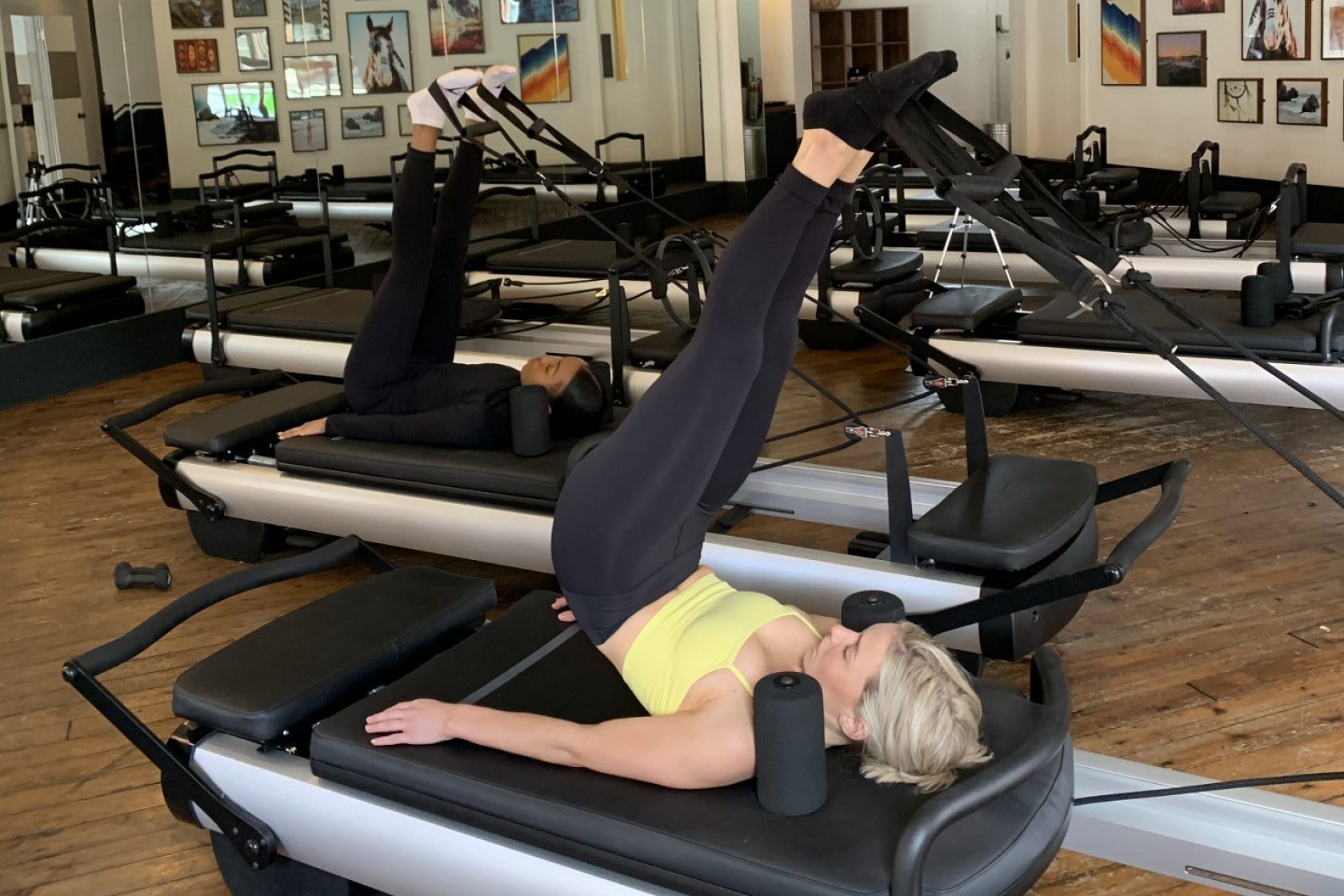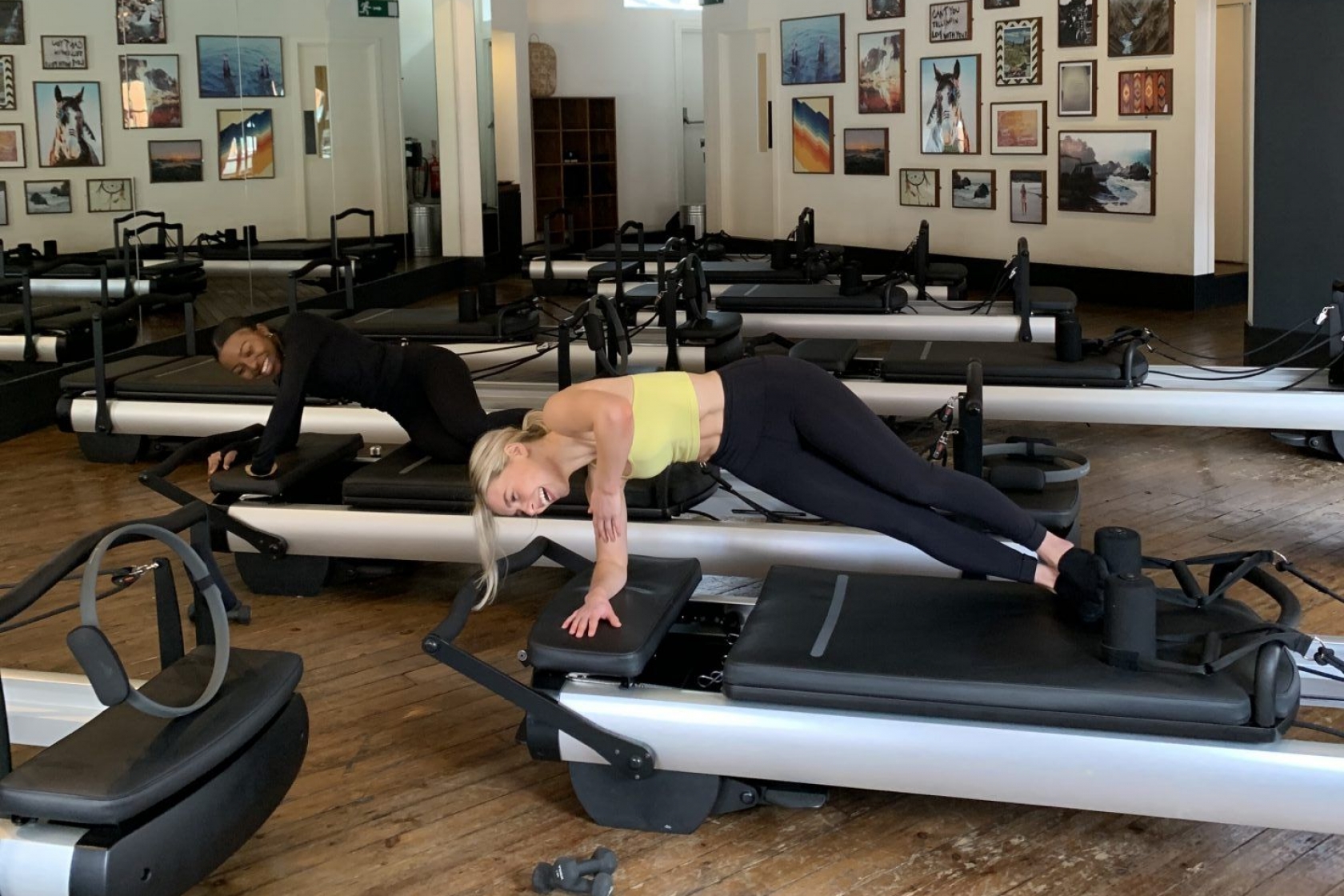Reformer pilates promises a stronger core using a unique piece of workout kit. Now that fitness classes have re-opened, writer Chloe Gray went to see if it delivers.
Confession time: I hate doing ab workouts. I’ve tried all of the beautiful core circuits on Instagram, and I still find them utterly boring. I don’t find any sense of achievement in holding a 60 second plank, just agony and frustration. I’ll happily skip over crunches and Russian twists in my training, ‘accidentally’ running out of time or convincing myself I’m too tired after my weight lifting sessions.
I have a pretty strong core as a side effect of constantly engaging it during pull-ups and squats. Since adding handstand training into my workouts, I’ve been using my abdominals more than ever, and I have noticed the difference in my posture and overall strength. So while I’m aware that building a stronger foundation has huge benefits, and that adding some core-specific training into my routine would be beneficial, I still don’t do it.
You may also like
Core workouts: what are your ‘core’ muscles and how do you work them?
I set myself a challenge to find a way to improve my core strength without hating it. Unconvinced I’d succeed, my first port of call was pilates. It’s a workout renowned for its ability to build stability and strength in the trunk, but after a year of home workouts I just couldn’t get on board with more living-room based mat work. I needed something totally different.
Reformer pilates seemed like the way to go, given that it promises the same core-supporting elements of pilates but using a unique piece of machinery. As soon as I was allowed to jump into a fitness class, I booked in for a session at Heartcore, the London-based pilates chain.

Heartcore uses its own version of a reformer, named a Coreformer, so I knew there was going to be no escaping any abdominal training during the one hour class. I’ll be honest: I was intimidated by the large machines at first sight. Despite the minimalistic wooden floors and white walls in the zen studio, I felt nervous about what these torturous-looking machines could do to me.
Our instructor, Sarah White, began by showing us how the Coreformer works. At the head was a solid platform for stability, attached to the sliding carriage. Lifting up the platform exposed two springs that you could attach to five different hooks depending on how much resistance you wanted the carriage to move with. At the base of the carriage were two ropes with handles, and there were bars surrounding the top and tail and either sides of the Coreformer.
You may also like
The best pilates exercises to get the strongest core of your life
Sarah eased us in to using the machine with some static plank holds, before moving us on to the more dynamic moves using the carriage. Luckily for me, it wasn’t just the abs that we were working. We worked on reverse lunges, sliding the carriage back with our foot, and tricep extensions with light dumbbells. We did side lunges, one foot balancing on the platform with the other on the carriage, moving it with the strength of our inner thighs. We looped our feet into the cables and did glute-targeting leg raises as the carriage swooshed us back and forwards.
But we also did core work. A lot of core work. The ‘mermaid’ exercise woke up muscles in my obliques I didn’t know that I owned. Wide leg raises worked deep into my abdominals. Overhead sit ups made me wince. Yet at no point did I feel ready to get up and walk away, or skip over an exercise because the discomfort didn’t feel worth it. To some extent, the novelty of sliding around made it – dare I say – enjoyable (or at least we were certainly laughing at our failings to get the hang of things).

I think the main reason I stuck with it was because it required a whole lot of concentration. At all times we were thinking about drawing our belly button in, lengthening our spine, squeezing our glutes and controlling the slow movements as our bodyweight made the carriage glide up and down. It was, frankly, impossible to be bored.
None of it was in vain, either. While I’m used to explosive, heavy workouts, the steady movements on the Coreformer made my body tremble. The next day, my thighs and obliques felt satisfyingly achy with DOMS I didn’t know you could get from pilates.
You may also like
Back pain: 3 pilates moves to alleviate back aches
Would I go again? Well, it’s not cheap, with a bundle of 10 classes costing £195, but the cost is understandable; you’re paying for uniquely designed kit and Heartcore’s pool of trainers who are some of the best pilates instructors around. And if it means I might finally do the core training and feel the difference in my posture, lifting and handstands, I think it’s worth the investment, even if I can only afford to make it to one class a month.
Follow @StrongWomenUK on Instagram for the latest workouts, delicious recipes and motivation from your favourite fitness experts.
Images: Chloe Gray
Source: Read Full Article